How Disease Prediction Models Reduce Crop Loss
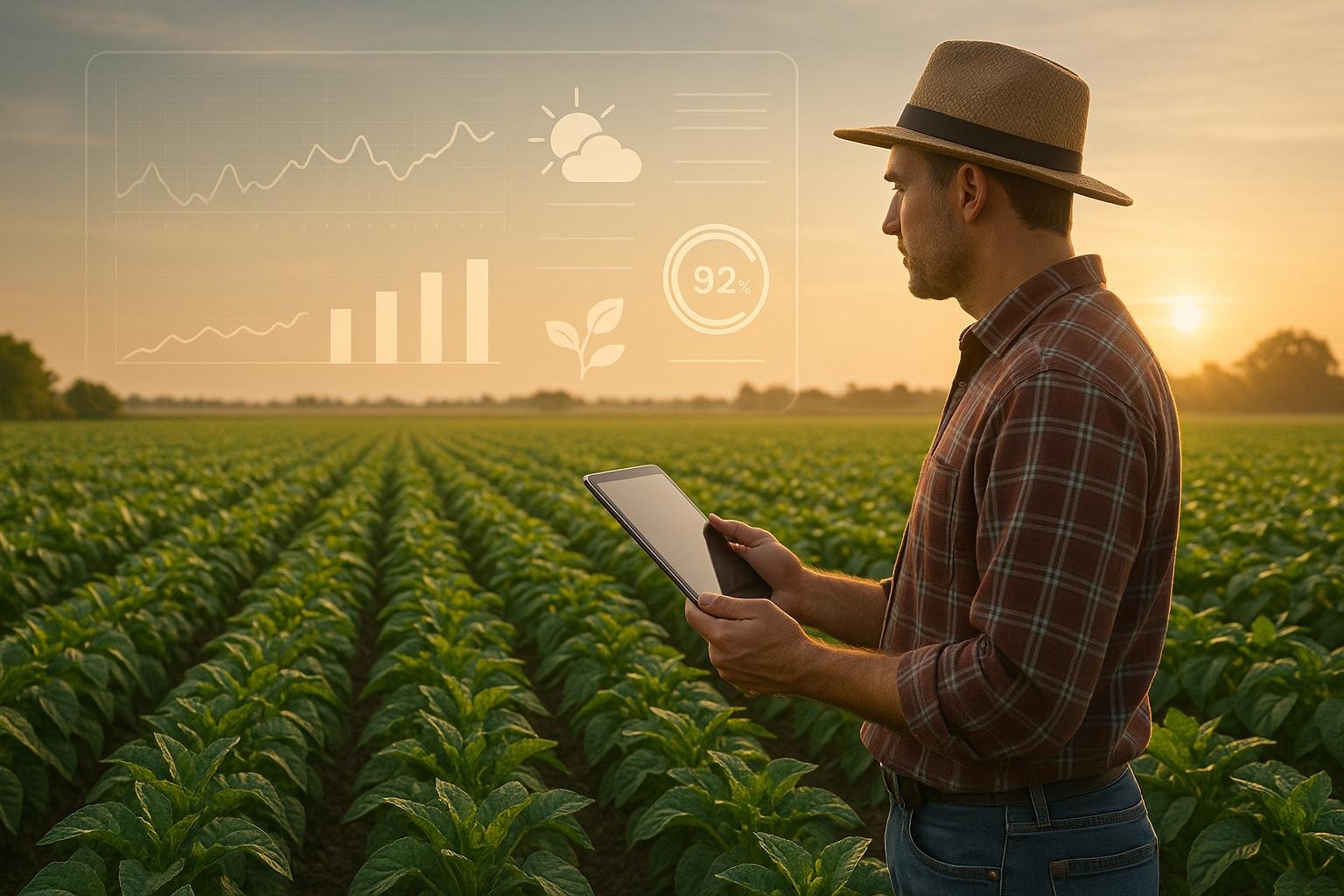
Farmers lose billions every year to crop diseases, but AI-powered disease prediction models are changing the game. These tools analyze weather, soil, and biological data to detect risks early, helping farmers prevent losses before they happen. Here's what you need to know:
- Early Detection: Predict diseases before symptoms appear, cutting crop losses by 30–50%.
- Cost Savings: Reduce pesticide use by 20–40% and save water by up to 50%.
- Works for All Farm Sizes: From mobile apps for small farms to drones for larger operations, these models are scalable.
- Improved Yields: Proactive planning and real-time alerts ensure healthier crops and higher productivity.
AI-Powered Crop Disease Identification: Introduction to Plant Health Solutions

How Disease Prediction Models Work
Disease prediction models function much like weather forecasts, offering insights into when and where crop diseases might emerge. This proactive approach helps farmers move from reacting to issues after they arise to preventing them before they occur. By blending data from various sources with advanced algorithms, these systems provide early warnings, equipping farmers with the information they need to protect their crops.
Using Data for Prediction
Modern disease prediction relies on a mix of data sources to create accurate forecasts. Weather data plays a central role since many plant diseases are triggered by specific environmental conditions, such as temperature and moisture levels [3]. These models gather data from in-field weather sensors, regional weather stations, and government services, tracking factors like air temperature, humidity, dew point, and CO₂ levels [1][3].
Remote sensing technologies, such as drones equipped with high-resolution cameras, add another layer of insight. These tools can detect signs of crop diseases even before visible symptoms appear [3][4]. For instance, a study on detecting wheat yellow rust using multispectral drone imagery achieved an 89.3% accuracy rate when analyzed with a random forest classifier [4].
In addition to weather and imagery, these models incorporate biological data, such as plant growth stages and pathogen spore counts, as well as information from grower surveys and agricultural reports [3]. This comprehensive approach helps assess not only the environmental conditions that might encourage disease but also the current state of crops and pathogens in a given area.
One standout example is the Cucurbit Downy Mildew (CDM) ipmPIPE forecasting system, which predicts the spread of CDM spores across North America. By integrating data from reporting networks, weather forecasts, and atmospheric models, it provides farmers with precise predictions of disease progression [3].
AI Algorithms and Forecasting
The real power of these models lies in their use of machine learning and deep learning algorithms. These tools process massive datasets, uncovering patterns that might otherwise go unnoticed. Convolutional Neural Networks (CNNs), for instance, are widely used in crop disease detection. They analyze leaf images, identifying features like texture, color, and shape with remarkable precision. On large, labeled datasets, CNNs consistently achieve over 95% accuracy, with models like VGG-16, GoogleNet, and AlexNet reaching 91–97% accuracy for classifying diseases in crops like rice and tomatoes [4].
Vision Transformers (ViTs) are the next step in AI-driven disease detection. Unlike CNNs, which focus on local features, ViTs use self-attention mechanisms to identify broader patterns and relationships across entire images. This enables even greater accuracy in disease classification [4]. Some advanced systems now combine CNNs for detailed analysis with ViTs for a more holistic interpretation. For example, a U-Net model trained on multispectral images achieved 97.13% accuracy in detecting wheat yellow rust, while a Mask R-CNN model achieved an Intersection over Union (IoU) score of 0.96 for identifying northern leaf blight in maize [4].
Federated Learning (FL) offers a solution for improving models while addressing data privacy concerns. This approach allows multiple users to collaboratively train a shared AI model without sharing raw data. Instead, only model updates are exchanged. In one study, an FL-based disease classification model using ResNet-50 achieved an impressive 99.5% accuracy across various client configurations [4].
Alison Robertson, a professor of plant pathology and microbiology at Iowa State University, highlights the importance of these tools:
"Our goal is to develop disease prediction tools that enable farmers to farm more sustainably, by predicting the kinds of diseases they will face, and giving them more clarity on whether a fungicide is going to be necessary." [5]
These AI algorithms go beyond detection, offering actionable insights like disease risk scores, incidence predictions, and severity forecasts. For example, the FAST model (Forecasting Alternaria solani on Tomatoes) calculates the severity of early blight on tomatoes using hourly data on leaf wetness and temperature [3]. Similarly, the Stewart's wilt prediction model estimates disease severity in sweet corn based on average temperatures during the winter months [3].
Key Benefits of Disease Prediction Models
Disease prediction models are reshaping the way farms operate, helping growers boost productivity, cut costs, and streamline their day-to-day processes. By focusing on early detection, smarter resource use, and scalability, these tools have become essential for modern crop management.
Early Detection and Quick Response
AI-powered models can spot diseases before symptoms even appear, giving farmers the chance to act quickly [6]. Tools like drones and satellites can monitor as much as 100 acres daily, far exceeding the capabilities of manual inspections [6]. With detection accuracies reaching up to 98%, these systems take the guesswork out of disease management and allow for precise treatments, reducing crop losses by 30–50% [6]. For example, smallholder farmers in Kenya using the PlantVillage mobile app have successfully cut crop losses from diseases like maize leaf blight by 30% through early detection [6].
Cost Savings and Better Resource Use
These models are also game-changers when it comes to saving money and using resources more effectively. Farmers using AI-driven systems report cutting pesticide use by 20–40%, which not only lowers costs but also reduces environmental impact [6]. On top of that, precision tools help save water by 30–50% and cut fertilizer use by up to 40%, all while maintaining or even boosting yields [7]. One medium-sized grain farm, for instance, saved over $75,000 annually by optimizing the application of fertilizers, pesticides, and water [7]. Similarly, The Wine Farm in Australia used machine learning to target high-risk areas, cutting fungicide use by 30% while still producing high-quality grapes [8]. Beyond materials savings, these systems also reduce administrative overhead by 15–20% and enhance overall operational efficiency by 10–25% [7]. These improvements make disease prediction models a practical choice for farms of any size.
Works for All Farm Sizes
One of the standout features of these models is their scalability. Small-scale farmers can use mobile apps for advanced disease detection without needing significant upfront investment. Medium-sized farms benefit from drones, which are often more cost-effective than traditional monitoring methods [10]. For instance, Organic Valley Co-Op improved both disease detection and crop health by adopting drone-assisted monitoring [11]. Large-scale operations, on the other hand, integrate data from multiple sources - like sensors and satellite imagery - to protect their crops. Green Fields Farm, for example, implemented an AI-driven system that reduced pesticide use by 30% while increasing soybean yields by 15% [11]. These models also help farms of all sizes tackle challenges like unpredictable weather, pest outbreaks, and shifting market demands [9]. Together, these advancements are pushing agriculture toward a more data-driven, predictive future that consistently delivers better seasonal outcomes.
sbb-itb-4d6a8dd
🚀 Ready to Reinvent Your Garden?
Join thousands of homeowners who have transformed their gardens using our AI design tool. Upload one photo to explore endless possibilities.
Get your AI garden designs →Applications in Seasonal Yield Optimization
Disease prediction models are reshaping how farmers approach seasonal planning. Instead of reacting to problems after they occur, these tools allow for proactive strategies that safeguard crops throughout the growing season. By leveraging these models, farmers can make informed decisions about timing, crop selection, and resource use, ensuring better outcomes for their harvests. This shift also paves the way for real-time monitoring of disease risks.
Real-Time Alerts for Disease Risks
Modern AI systems provide real-time alerts when they detect conditions favorable for disease outbreaks. These alerts give farmers a critical window to act before the situation worsens. By analyzing environmental factors and historical data, these systems can forecast potential outbreaks with impressive accuracy [2].
For example, AI-powered models have achieved detection rates as high as 99.35% for crop diseases [12]. Specific applications include using convolutional neural networks (CNNs) like VGG-16 and GoogleNet, which demonstrated accuracies of 92.24% and 91.28% on rice plants after data augmentation. Similarly, these systems achieved 97.29% and 97.49% precision on tomato leaves after hyperparameter tuning [12]. Another advanced approach recorded accuracies of 98.25% for Powdery Mildew, 98.85% for Downy Mildew, and 93.95% for Bacterial Leaf Spot [17].
These alerts empower farmers to take timely actions, such as adjusting planting schedules, choosing disease-resistant crop varieties, and deploying biocontrol agents [12]. This is particularly impactful given that crop pests and diseases account for global yield losses of approximately 21.5% in wheat, 30.3% in rice, 22.6% in corn, 17.2% in potatoes, and 21.4% in soybeans [13]. Annually, 40% of crops are lost to plant diseases and pests, costing the global economy around $220 billion [2].
"Early detection supports a stable food supply, which is essential for maintaining food security, particularly in regions heavily reliant on agriculture." [2]
In addition to immediate alerts, predictive models play a key role in guiding long-term seasonal planning.
Planning Planting Schedules and Crop Selection
Predictive models take the guesswork out of seasonal planning by analyzing weather patterns, historical data, and market trends. This data helps farmers make strategic decisions about crop selection and planting schedules [14].
For instance, these models can forecast demand for specific crops and recommend the best planting times and locations [15]. Algorithms like Bayes Net and Naïve Bayes have demonstrated near-perfect accuracy rates, reaching up to 99.6% [14]. Weather remains a major variable in agricultural planning, as adverse conditions can cause production shortages ranging from 30% to 70% compared to expectations, even when other factors are stable [14]. Additionally, machine learning tools identify early signs of crop diseases, enabling farmers to take preventive measures and mitigate losses [15].
"Utilizing the outcome of the model, farmers may choose the best productive crops as well as prevent crop diseases and reduce output losses by taking preventive actions. Consequently, planning and decision-making processes are supported and farmers can predict possible crop yields." - Forkan Uddin Ahmed, Department of CSE, Chittagong University of Engineering & Technology [14]
These predictive insights integrate seamlessly with advanced tools, enhancing overall field management.
Integration with Tools Like AIGardenPlanner
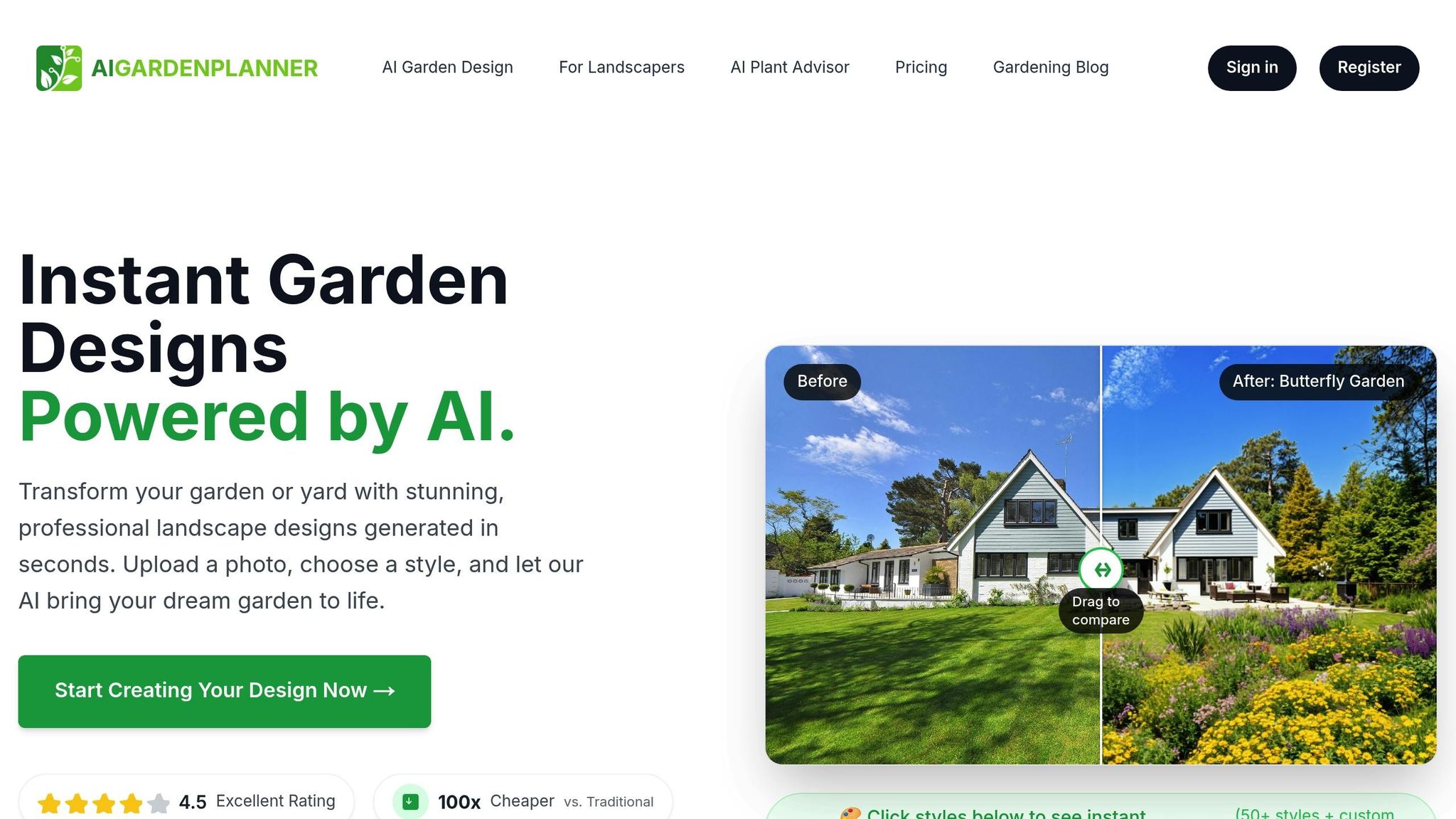
Platforms like AIGardenPlanner take these predictive insights a step further by turning them into actionable strategies for gardeners and farmers. By combining disease prediction data with personalized recommendations, these tools offer tailored planting suggestions and regional growing guides, helping to minimize disease risks right from the planning stage.
AIGardenPlanner’s AI Plant Advisor, for example, uses disease prediction insights to recommend crop varieties that are naturally more resistant to common diseases in a specific area. With access to over 50 garden styles and plant recommendations tailored to location, climate, and user preferences, growers can make informed choices that promote healthier yields.
This integration is especially valuable as early disease prediction supports robust plant growth and increased production [17]. Research has shown that deep learning methods, such as VGG-16 with an 89.5% accuracy rate, significantly outperform traditional machine learning approaches in detecting plant diseases [16].
In addition, AIGardenPlanner provides detailed growing guides and maintenance schedules that complement disease prediction models. These guides incorporate location-based suggestions, helping users implement preventive measures alongside real-time alerts. Together, these tools create a comprehensive approach to seasonal yield optimization, addressing everything from garden design to plant health management.
Challenges and Future Directions
Disease prediction models hold great promise, but they also face several obstacles that need to be addressed to maximize their impact. Recognizing these challenges is essential for farmers and agricultural experts when considering whether to adopt these technologies.
Data Quality and Variety
The accuracy of prediction models heavily depends on the quality of the data they use. Poor data can lead to biased results and unreliable predictions, making it difficult to trust the outcomes [19]. Issues like data imbalance and domain shift further limit the reliability and adaptability of these models [18][20]. Another major hurdle is the lack of standardized data formats, which complicates model development and integration [22]. Additionally, data governance concerns make sharing information across platforms even more challenging [21]. Beyond these technical issues, ensuring the tools are user-friendly remains a key concern.
Making Tools Easy to Use
Many disease prediction tools, while advanced, are not designed with ease of use in mind - especially for farmers who may not have a technical background. For instance, a study revealed that 59% of young farmers avoided applying for USDA programs due to the complexity of application and reporting processes [23]. To address this, new AI training modules are being developed to help farmers navigate these tools effectively [23]. Simplified software interfaces and mobile apps are also making it easier for farmers to make data-driven decisions without needing specialized skills [24]. For example, IoT-assisted platforms like Hello Tractor have boosted incomes for 87% of their users by providing straightforward, AI-powered solutions [23]. Online communities and collaborations between tech companies and farming organizations further support the adoption of these tools [24].
The Future of Predictive Agriculture
Tackling these challenges opens the door to more advanced and accessible solutions. The next wave of disease prediction models is expected to deliver higher accuracy and greater ease of use. For instance, hybrid AI systems that combine Convolutional Neural Networks (CNNs) with Vision Transformers (ViTs) are poised to improve performance, with CNNs achieving classification accuracies between 95% and 99% when properly trained [4]. Another exciting development is Edge AI, which allows real-time disease detection directly on IoT devices in remote areas, cutting down on delays [25]. Federated Learning offers a way to address data privacy concerns by enabling collaborative model training across farms without centralizing sensitive information - achieving accuracy rates as high as 99.5% [4].
Multi-modal data fusion is another promising avenue, integrating inputs like UAV imagery, satellite data, and soil health metrics to improve detection. For example, a study using multispectral UAV imagery and a random forest classifier achieved an 89.3% accuracy rate in detecting wheat yellow rust [4]. The field is advancing quickly; research on machine learning in agriculture grew by 26% from 2018 to 2019 and then surged by 109% in 2020 compared to 2019 - a 164% increase since 2018 [21]. Practical applications are already showing results, such as IoT-enabled irrigation systems that have reduced water usage by over 30% [25]. By continuing to refine accuracy and usability, predictive agriculture can play a crucial role in minimizing crop losses and improving farming outcomes.
Conclusion: Changing Crop Management with AI
AI-powered disease prediction models are reshaping how farmers approach crop protection, moving the focus from reacting to problems after they occur to preventing them in the first place. With plant diseases and pests causing an estimated $220 billion in annual crop losses worldwide [30], these tools offer a much-needed solution to safeguard investments and support global food security.
For example, traditional methods now enhanced by AI can detect apple scab with an impressive 95% accuracy [28], while also reducing pesticide use by as much as 97% [26]. The market for AI in agriculture is growing rapidly, projected to increase from $1.7 billion in 2023 to $4.7 billion by 2028 [27]. These advancements aren't just benefiting large-scale operations - smaller farms are also seeing gains, with some doubling their income to approximately $800 per acre by using AI advisory services [27]. It's no wonder why experts are advocating for widespread adoption of these technologies.
"AI in farming isn't perfect, but the technology is improving daily. Large- and small-scale farm producers should embrace these tools early to maximize their transformative potential for crop yields, sustainability, and economic prosperity." - Rose Morrison, Managing Editor, Renovated Magazine [26]
Beyond the numbers, integrating AI with practical tools is further boosting crop resilience. Platforms like AIGardenPlanner help farmers make smarter decisions about what to plant, how to design their gardens, and which growing strategies to adopt. By selecting plants suited to their climate and optimizing layouts, farmers can create naturally resilient environments that complement predictive monitoring systems.
With climate change, shifting agricultural zones, and new disease threats on the rise [29], these tools are becoming essential for maintaining productive harvests. The combination of AI-driven disease prediction and smart planning tools provides a well-rounded strategy to tackle both immediate risks and long-term challenges.
Adopting these technologies is more than just an upgrade - it's the future of farming. Farmers who embrace AI for disease prediction alongside intelligent planning will be better equipped to achieve higher yields, lower costs, and build operations that can adapt to a changing environment.
FAQs
How do disease prediction models help reduce pesticide use and conserve water on farms?
Disease prediction models are transforming how farmers manage crop health by spotting potential diseases early and precisely. This means farmers can focus treatments only where they're needed, cutting back on unnecessary pesticide use and saving money. By narrowing down application areas, these models also help minimize pesticide runoff, which could otherwise pollute nearby water sources.
These models go a step further by analyzing factors like weather and soil conditions to predict disease outbreaks. Armed with this insight, farmers can act quickly to stop infestations before they spread, saving water by avoiding needless irrigation and easing the pressure on water supplies. This thoughtful, efficient method not only helps safeguard crops but also promotes farming practices that are kinder to the environment.
What data is used in disease prediction models to help prevent crop loss?
Disease prediction models draw on a mix of data sources to deliver reliable forecasts and early alerts about crop health. Among the most crucial inputs are weather conditions (like temperature, humidity, and rainfall), soil properties (such as pH levels and moisture content), and farming methods (including planting schedules and crop rotation practices).
In addition to these, modern technologies play a significant role. These include images of plant leaves, multispectral and hyperspectral imaging, and field sensor data gathered from equipment and monitoring tools. By integrating all these elements, these models empower farmers to act promptly and minimize the chances of crop damage.
How can small-scale farmers use AI-powered disease prediction tools without spending a lot of money?
Small-scale farmers now have an affordable way to benefit from AI-powered disease prediction tools through mobile apps and cloud-based platforms. These tools use image recognition and machine learning to detect issues, and all that's needed is a smartphone and an internet connection - no pricey equipment required.
Some of these AI tools go a step further by remotely analyzing soil samples and crop images. They can identify diseases, pests, or even nutrient deficiencies early on. This allows farmers to act quickly, minimizing crop losses and boosting yields, all without requiring a hefty financial commitment.
🎨 Visualize Your Dream Garden Today!
Transform any outdoor space into a professional landscape design in minutes. Just upload a photo, choose your style, and let our AI do the rest.
Start your garden transformation now →Related posts
Related Articles

5 Common Irrigation Problems AI Solves
AI-powered irrigation systems tackle common issues like water waste and uneven distribution, promoting healthier plants and reducing costs.
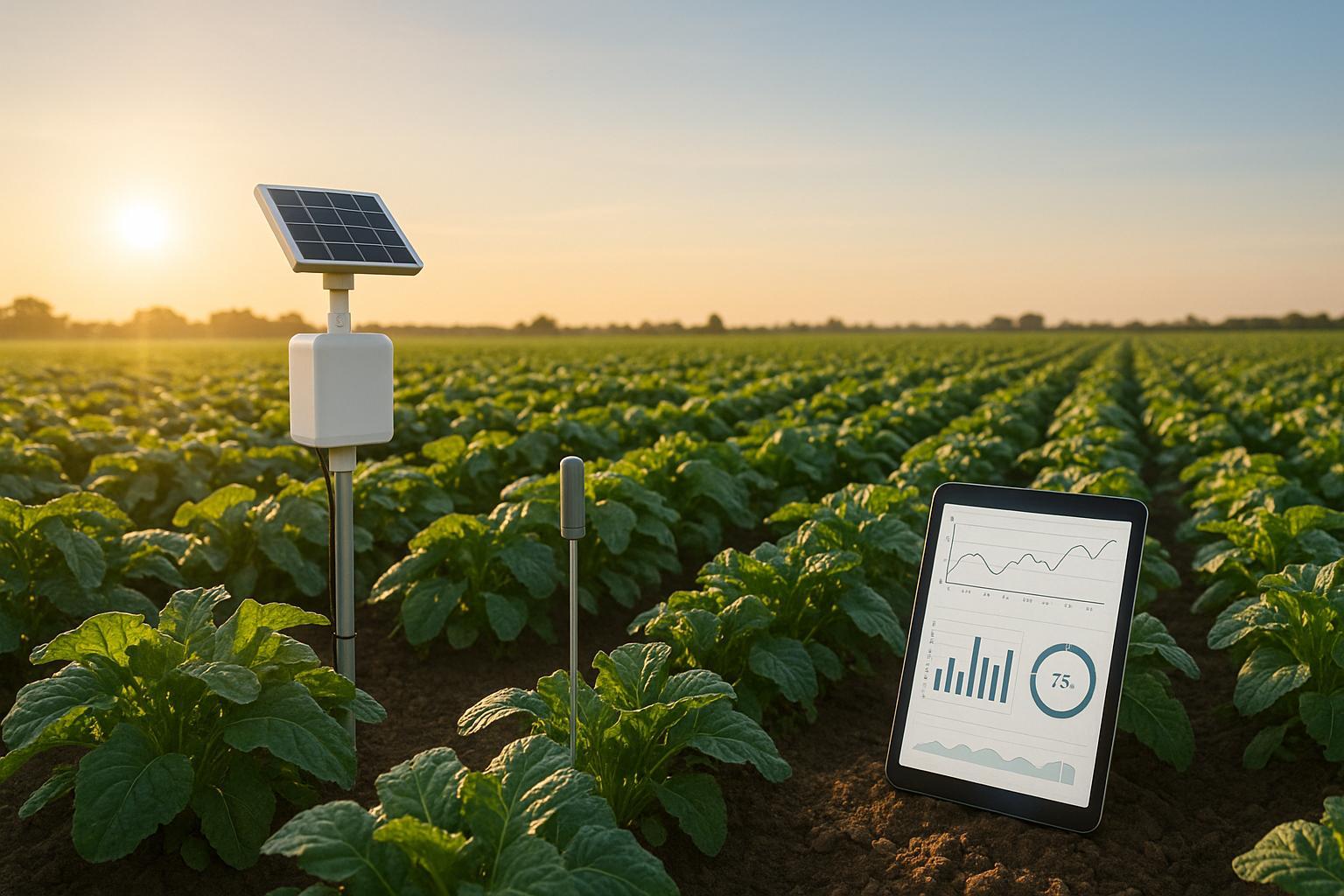
AI vs IoT: Which Drives Better Plant Growth Predictions?
Explore how AI and IoT are revolutionizing agriculture by enhancing plant growth predictions through real-time data and advanced analytics.

How AI Predicts Frost Risks for Seasonal Planting
AI enhances frost prediction for farmers, allowing for precise planting schedules and reduced crop losses through actionable insights.
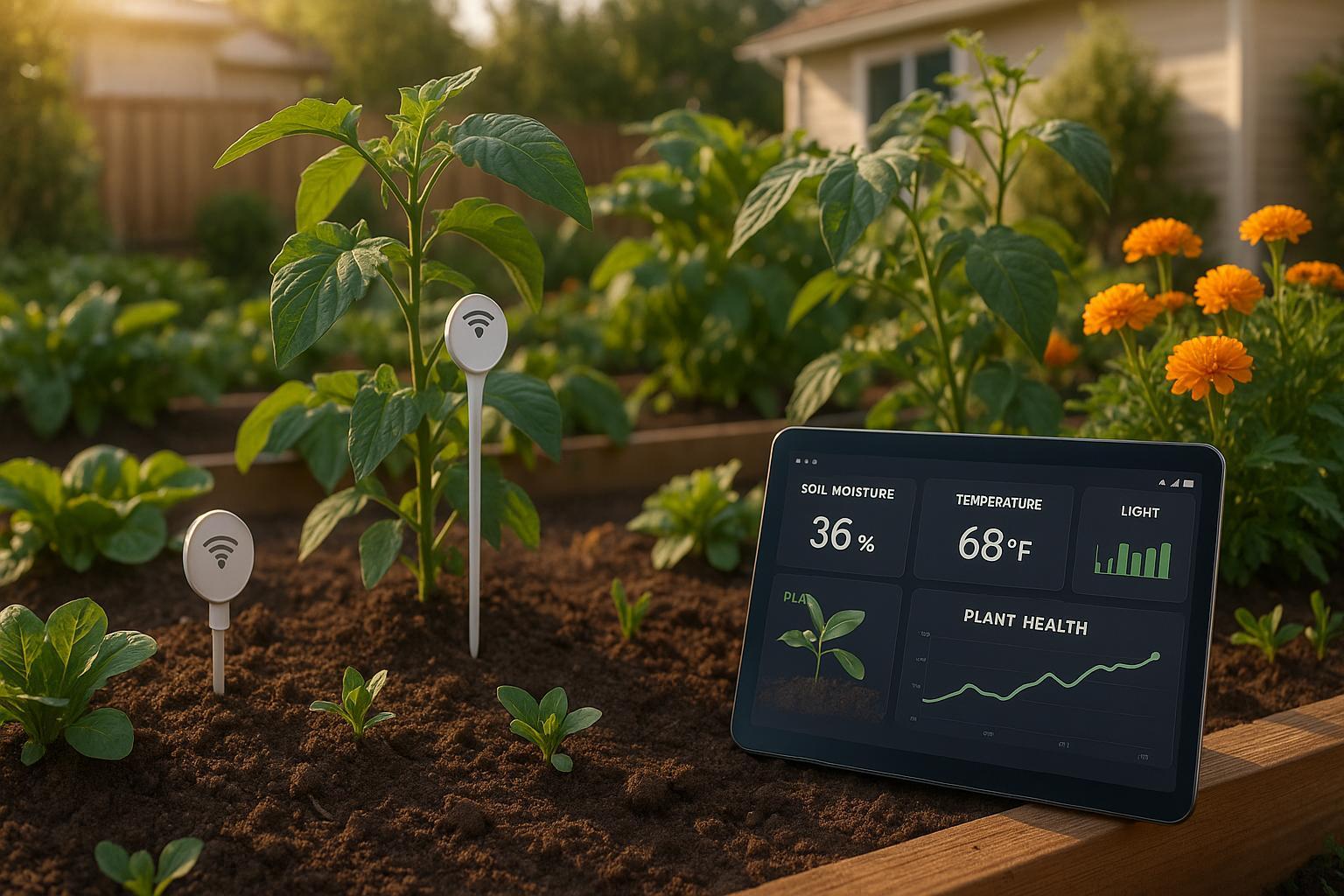
IoT Data Collection for Climate-Specific Gardening
Explore how IoT technology revolutionizes gardening by optimizing resource use, predicting diseases, and enhancing plant health for sustainable practices.
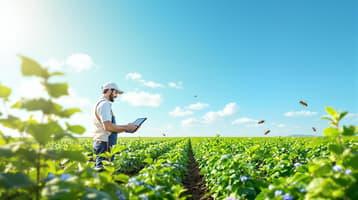
How AI Deploys Microbial Pest Control
Explore how AI and microbial pest control are revolutionizing agriculture with precise, efficient pest management solutions.
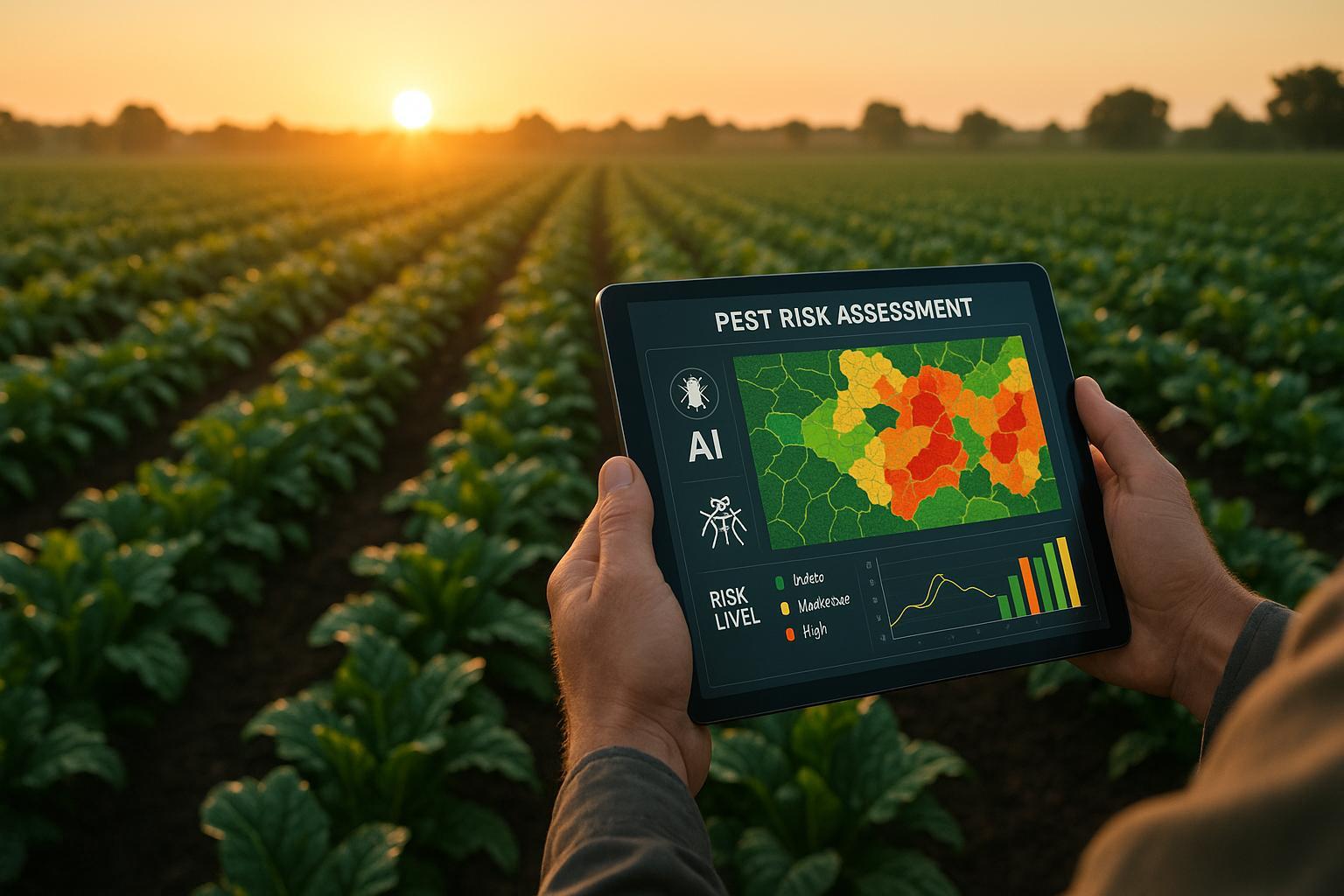
AI Tools for Pest Resistance Risk Assessment
Explore how AI tools are transforming pest management for farmers, reducing pesticide use and enhancing crop yields through advanced technology.